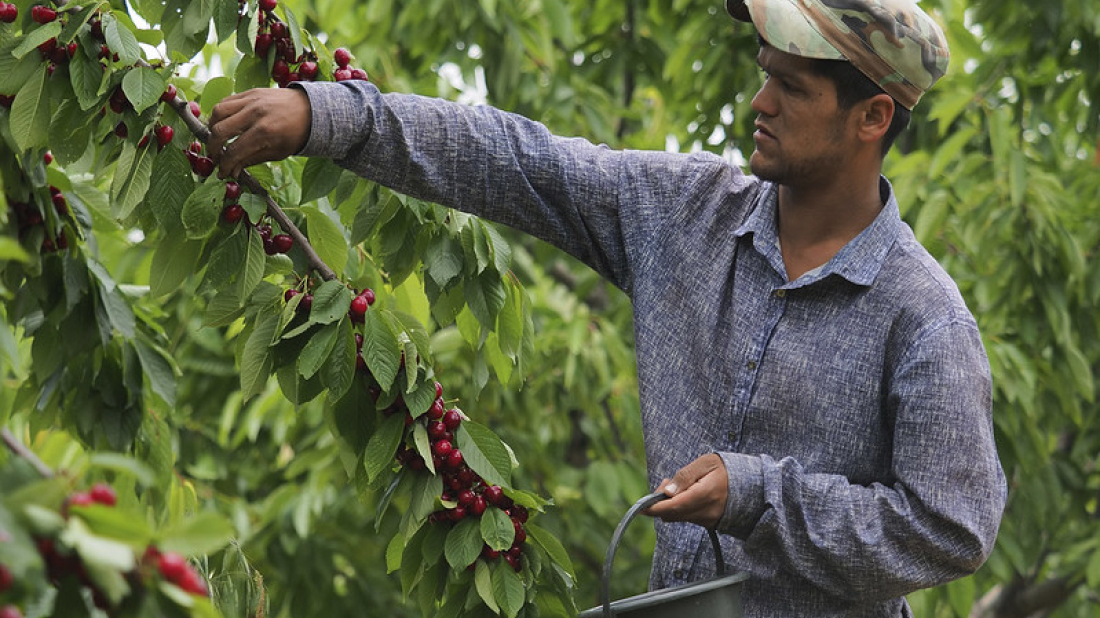Blast hits mosque during evening prayers in Nigeria’s Maiduguri
An explosion tore through a mosque during evening prayers on Wednesday in Maiduguri, the capital of Nigeria’s Borno state, a Reuters witness said. T...

An integrated mountain agropastoral system in Tajikistan has become the first Central Asian addition to the Globally Important Agricultural Heritage Systems (GIAHS), - the Food and Agriculture Organization of the United Nations (FAO) announced.
A pine tree agroforestry system and traditional bamboo and fishery system in the Republic of Korea and an agrosilvopastoral system in Portugal were recognized as well.
“As it extends to new regions and countries, the GIAHS network is once again demonstrating its distinctive role in showcasing agricultural systems that promote traditions nurtured by communities and ways of pursuing their livelihoods in harmony with nature,” said Kaveh Zahedi, Director of the FAO Office of Climate Change, Biodiversity and Environment.
“As we confront the climate crisis and loss of biodiversity, the contribution age old ways to build resilience and use biodiversity sustainably is all the more vital in transforming our agrifood systems to keep up with the challenges,” - he added.
The systems were formally designated under FAO’s flagship programme during a meeting of the GIAHS Scientific Advisory Group held from 7 to 8 of July 2025. The newest additions bring FAO’s worldwide agricultural heritage network to 99 systems in 29 countries around the globe.
With rising interest from across the globe the GIAHS designations are set to exceed 100 by the time a Certificate Award Ceremony will take place on 31 October in the context of FAO’s 80th anniversary celebrations.
In Tajikistan, Almosi Valley integrated agropastoral system combines seasonal transhumance of sheep with the cultivation of grapes, cereals, orchards, and vegetables across harsh mountain landscapes. Shaped over centuries, it supports food and livelihood security, conserves agrobiodiversity, and preserves cultural heritage. Rooted in ancestral knowledge, it sustains resilient communities facing soil erosion, water scarcity, and climate variability.
The valley hosts diverse ecosystems and a wide range of crops and livestock, including landraces of wheat, barley, and vegetables, and the local Hisori sheep. The Pink Toifi grape is central to the valley’s identity, valued for its quality and processed into raisins, syrup (shirini), juice, and wine.
Farming is guided by ancestral practices, including contour planting, organic fertilization, the Muchal calendar, guiding agriculture based on environmental cues, and ancient irrigation methods to conserve water.
Community management is coordinated through mahalla (neighbourhood) committees, family farms, cooperatives, and collective farms, ensuring knowledge transmission, shared resource use, and cultural continuity.
Thailand and Cambodia both reported fresh clashes on Wednesday, as the two sides prepared to hold military talks aimed at easing tensions along their shared border.
Libya’s chief of staff, Mohammed Ali Ahmed Al-Haddad, has died in a plane crash shortly after departing Türkiye’s capital, Ankara, the prime minister of Libya’s UN-recognised government has said.
A majority of Russians expect the war in Ukraine to end in 2026, state pollster VTsIOM said on Wednesday, in a sign that the Kremlin could be testing public reaction to a possible peace settlement as diplomatic efforts to end the conflict intensify.
Military representatives from Cambodia and Thailand met in Chanthaburi province on Wednesday ahead of formal ceasefire talks at the 3rd special GBC meeting scheduled for 27th December.
Afghanistan and Iran have signed an implementation plan to strengthen regulation of food, medicine, and health products based on a 2023 cooperation agreement.
China has given the nod for car makers to sell Level 3 self-driving vehicles from as early as next year after it approved two electric sedans from Changan Auto and BAIC Motors.
Warner Bros Discovery’s board rejected Paramount Skydance’s $108.4 billion hostile bid on Wednesday (17 December), citing insufficient financing guarantees.
Ford Motor Company said on Monday it will take a $19.5 billion writedown and scrap several electric vehicle (EV) models, marking a major retreat from its battery-powered ambitions amid declining EV demand and changes under the Trump administration.
Iran has rolled out changes to how fuel is priced at the pump. The move is aimed at managing demand without triggering public anger.
U.S. stock markets closed lower at the end of the week, as investors continued to rotate out of technology shares, putting pressure on major indices.
You can download the AnewZ application from Play Store and the App Store.

What is your opinion on this topic?
Leave the first comment